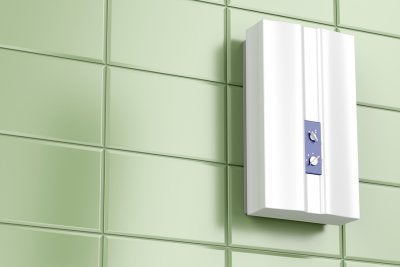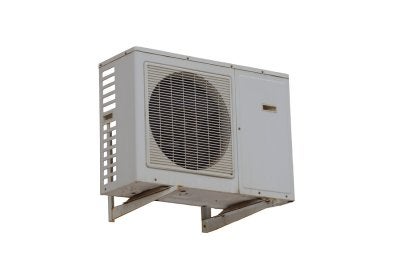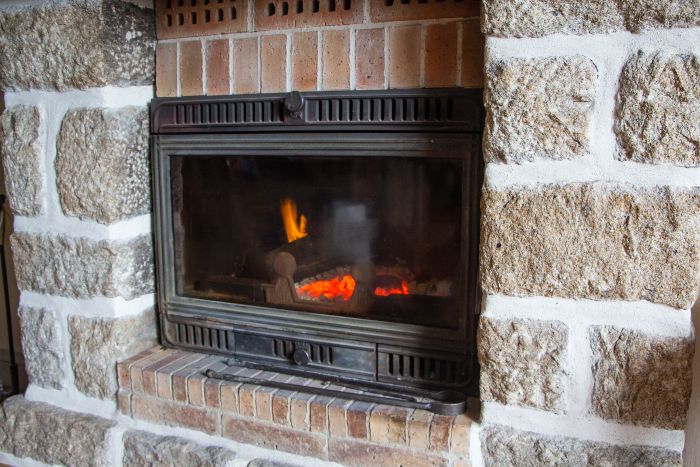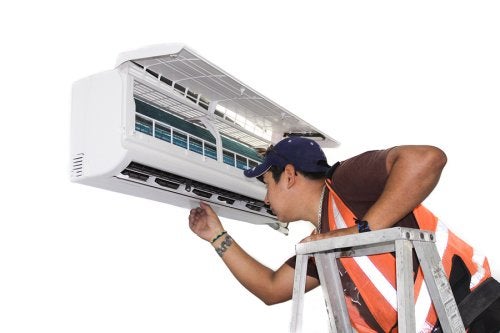-
Get the FAQs and Answers About Tankless Water Heaters
While traditional water heaters use a tank to heat water, tankless water heaters heat water on demand. If you’re thinking of installing a tankless water heater in your Seattle home, you may be wondering whether the investment is worth it. Here are some of the most commonly asked questions about tankless water heaters.

Do tankless water heaters use less energy than traditional water heaters? Yes. Because tankless water heaters don’t have to keep water heated constantly, they don’t need to use as much energy as standard water heaters do. This is both good for the environment and good for your household budget. With a tankless water heater, you can enjoy hot water whenever you want without having to be concerned about wasting energy.
Will a tankless water heater cost a lot to operate? While tankless water heaters cost more to install than standard water heaters, they also cost less to operate on a regular basis. According to Energy Star , households that install tankless water heaters can expect to save at least $100 a year on their HVAC expenses.
Do tankless water heaters require a lot of space? In fact, tankless water heaters take up much less space than most standard water heaters. While traditional water heaters tend to be large and bulky, a tankless water heater is compact and can be installed in virtually any part of your home. Many homeowners appreciate the versatility allowed by tankless water heaters, which can be placed anywhere from garages to attics.
Will it be more difficult to get hot water with a tankless water heater? You might be concerned that you won’t be able to get heated water as reliably with a different type of water heater, especially if you have a large household where more than one person might need hot water. There’s no need to worry: A tankless water heater will allow you to get hot water from multiple taps—such as your shower tap and your kitchen sink tap—at the same time.
““
-
Is Your AC Unit Leaking Refrigerant?
Your air conditioning unit needs just the right amount of refrigerant to continue to function properly—neither too much nor too little, in other words. If your AC unit is low on refrigerant, the most likely cause is a leak. If you have reason to think that there could be a leak in your AC unit, you should call an air conditioner contractor in the Seattle area so that your leak can be tracked down and repaired. These are some of the most likely signs that your AC unit may have sprung a leak.

Your utility bills are unusually high. When there’s a refrigerant leak in your system, your AC unit has to run for more hours to keep your household at a comfortable temperature. You’ll see the expensive results of this when your electric bill arrives. If you want to ensure that the cost of cooling your home doesn’t get out of hand, always be quick to respond to any suspected AC leaks.
Your home isn’t staying cool. If you keep running your air conditioning and your house is still uncomfortably warm, a leak could be the culprit. When your AC is low on refrigerant, it’s much more difficult for it to effectively cool the air inside your home. If the air coming out of your registers is warm—or if there isn’t much air coming out at all—that’s another strong sign that your AC doesn’t have enough refrigerant.
There’s ice on your refrigerant lines. If there’s a refrigerant leak, the copper wire line on your outdoor AC unit can become covered with ice—even if it’s hot outside. When your AC has low refrigerant, it causes the remaining refrigerant to become too cold and cause freezing in your evaporator coil. To avoid expensive damage to your compressor, turn off your AC unit right away and call an HVAC professional.
-
Top Fireplace Inserts to Consider
In the ever-evolving world of home heating and indoor comfort, one technology continues to stand out: fireplace inserts. Fireplace inserts combine traditional aesthetics and charm with modern convenience and efficiency, offering numerous benefits to homeowners who make this upgrade. Explore the top fireplace inserts to consider and the many benefits they offer.
How Do Fireplace Inserts Work?

If you already have a wood-burning fireplace, you may wonder why you should install an enclosed combustion system in the existing fireplace opening. Consider that with traditional open fireplaces, much of the generated heat escapes up the chimney.
In contrast, a fireplace insert captures more heat and directs it into your living space, making your home warmer and more energy-efficient. Many inserts even come with a blower for better heat distribution. You can use a fireplace insert to convert your open, wood-burning fireplace into an enclosed system or upgrade to a gas or electric heat source. This makes inserts one of the most affordable ways to add a modern, convenient fireplace to your home.
Types of Fireplace Inserts
You have three main types of fireplace inserts to choose from:
Wood fireplace inserts are the perfect fit for those who want the authentic experience of a wood-burning fire. They provide a crackling, glowing ambiance while significantly improving heat efficiency and reducing emissions compared to open wood fireplaces.
Gas fireplace inserts are known for their convenience and ease of use. Operating on either natural gas or propane, these inserts provide a steady source of heat with the flick of a switch. The flame effect closely imitates the visual allure of a real wood fire, appealing to homeowners who prefer a traditional aesthetic.
Electric fireplace inserts are the epitome of ease and versatility. They do not require venting or a dedicated fuel source beyond an electrical outlet. These inserts offer a variety of modern flame effects and often come with convenient features like remote controls, timers, and thermostats.Benefits of Installing a Fireplace Insert
If you’re trying to decide if installing a fireplace insert is worth it, consider these numerous advantages:
- Reduced heat loss: The ability to heat your home more efficiently is the primary reason most people install fireplace inserts. This makes it possible to heat your home in a traditional way but with far lower energy bills and more even heat distribution.
- Updated aesthetics: Fireplace inserts provide a fresh, updated look to your hearth without the need for extensive renovation. This, in turn, upgrades the aesthetics of the entire room with a beautiful new focal point.
- Ease of use: With simple controls and minimal maintenance, fireplace inserts are designed for convenient operation. Wood and gas inserts can even be used during power outages, keeping your home warm and lit until the power is restored.
- Health and safety: Fireplace inserts are safer and healthier than traditional open fireplaces. They produce fewer emissions and particulates, improving your home’s indoor air quality, and are much less likely to ignite a chimney fire.
- Design versatility: Whether you’re drawn to the charming wood-burning look, the convenience of a gas flame, or the sleek lines of a modern electric fireplace, you can find an insert to match your style.
Designing Around Your Fireplace Insert
A fireplace insert transforms your hearth completely. With surrounds ranging from classic black to embellished cast iron or nickel, the visual impact hinges on the size of the insert relative to the existing firebox. Depending on your chosen style, you can tailor your decor to highlight the insert’s unique qualities.
If you’re considering an electric fireplace insert, consider that freestanding versions lack a surround, leaving visible space between the insert and the firebox walls for a unique look. The design considerations for electric inserts extend to the power outlet location. Plug-in models may display visible cords running to a nearby outlet, although they offer the flexibility of burning wood in the original firebox during power outages. Alternatively, hard-wired electric inserts provide a cleaner look but permanently alter the fireplace’s functionality, which impacts heating capabilities during power outages.
Choosing the Right Fireplace Dealer
When considering a fireplace insert, it’s crucial to consult a trusted local dealer to ensure compatibility with your existing fireplace opening. That’s where Olson Energy Service comes in. As a family-owned and operated business serving Seattle since 1926, we are committed to your safety and comfort. Our decades of experience, dedication to quality, and personalized service make us the go-to option for all your fireplace insert needs.
Call us today at 206.782.5522 or contact us online to schedule a fireplace insert installation estimate in Seattle, WA. We’re here to serve, and we’re excited to help you discover the perfect fireplace insert for your home!
““
-
Should You Switch to a Ductless Mini-Split?
If you’re looking for a smart and cost-effective alternative to having a central HVAC system in your Seattle home, you might want to consider the potential of a ductless mini-split system . A mini-split system is a type of HVAC system that works without the ductwork that central systems require to function. Instead, a mini-split system uses an outdoor unit and an indoor unit—connected by wires through a small hole in the wall—in tandem to heat and cool one or more rooms inside your home. Mini-split systems are easy to add to homes that you’ve just moved into, and they’re a terrific way to upgrade your current house as well. If you don’t want to install ductwork, or if your home is small, a mini-split system may be a better option for you than a new central HVAC system. Mini-split systems are one of the most efficient climate control options available, and they are simple and convenient to operate.

RECENT POSTS
categories
- Uncategorized
- Air Conditioner
- Fireplace Inserts
- Fireplace Insert Installation
- Air Conditioning Installations
- Air Conditioning Units
- Air Conditioner Maintenance
- HVAC Professionals
- Heat Pump Installation
- Heating and Cooling
- HVAC Unit
- Heat Pumps
- Furnace
- Furnace Service
- Tankless Water Heaters
- Water Heaters
- Energy Efficiency
- HVAC Contractors
- Olson Energy Service
- Mini-Split Systems
- Ductless Air Conditioner
- Residential Services
- Seasonal Boiler Maintenance
- HVAC Maintainance
